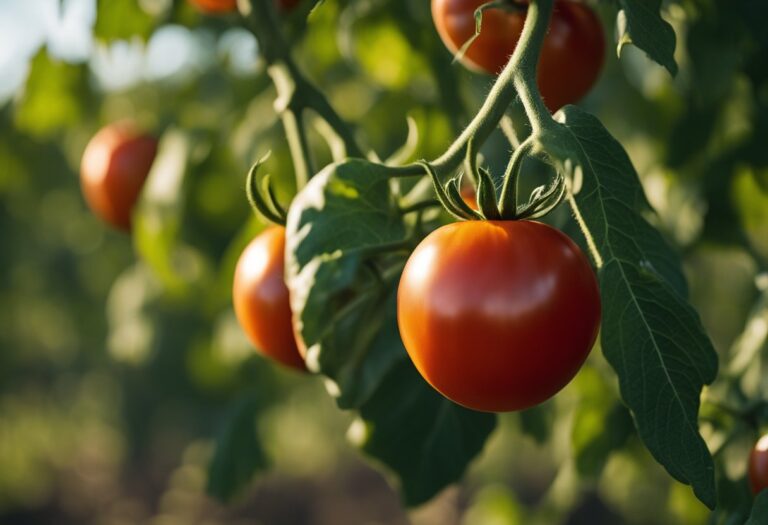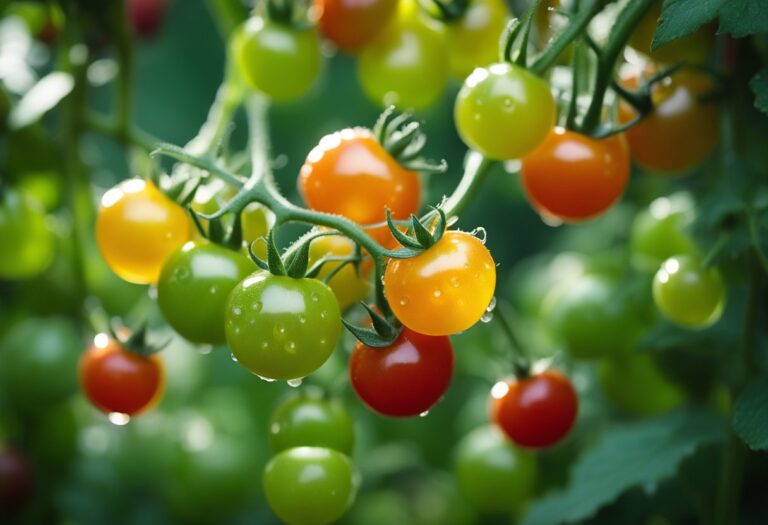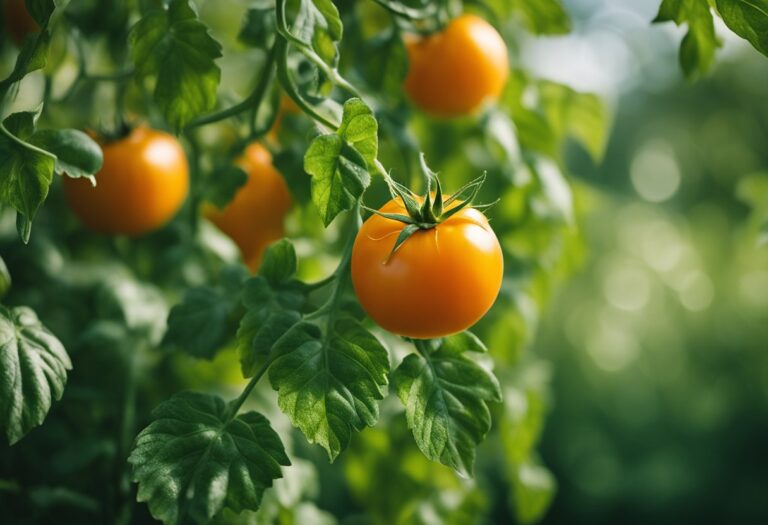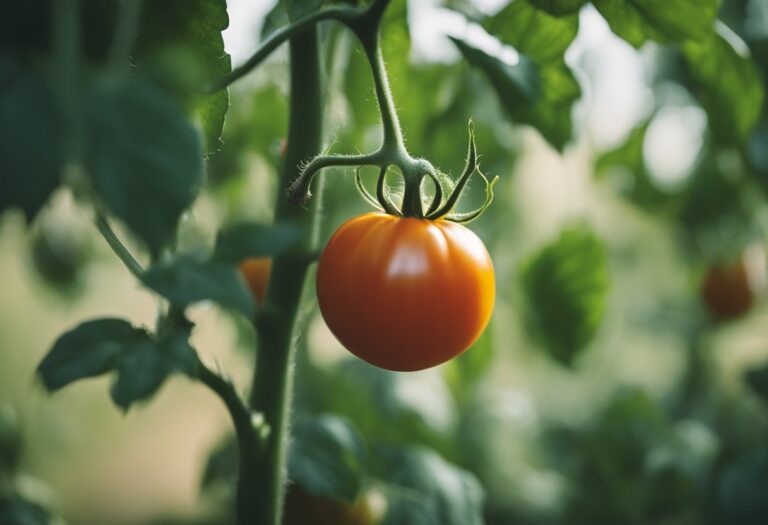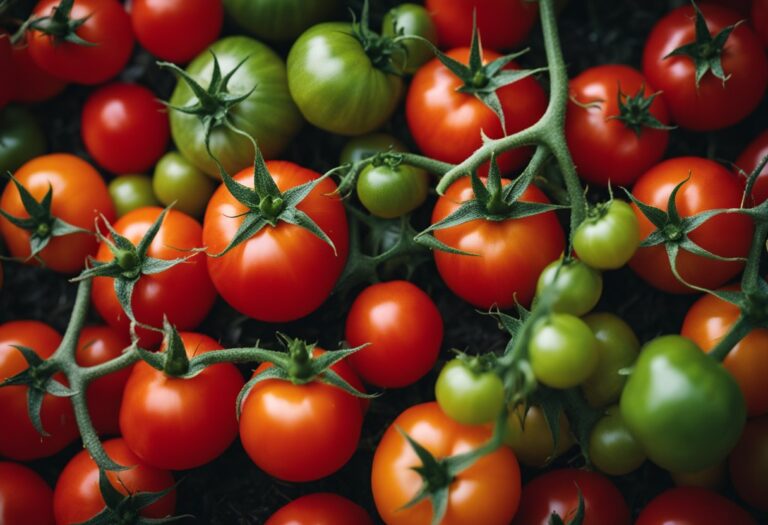Tomato Cages Home Depot: The Best Options for Your Garden
If you’re looking to grow tomatoes in your garden, you’ll need to provide them with proper support. Tomato cages are a popular choice for home gardeners, and Home Depot offers a variety of options to choose from. In this article, we’ll explore the different types of tomato cages available at Home Depot, how to choose the right one for your needs, and how to care for and maintain your tomato cages.

Home Depot carries a wide selection of tomato cages, including wire cages, stake cages, and spiral supports. Each type has its own advantages and disadvantages, so it’s important to choose the right one based on your specific needs. Wire cages are sturdy and durable, but can be difficult to store when not in use. Stake cages are easy to install and store, but may not provide enough support for larger tomato plants. Spiral supports are a good choice for small tomato plants, but may not be strong enough for larger plants.
When choosing a tomato cage, consider the size of your tomato plants, the amount of space you have in your garden, and your personal preferences. Make sure the cage is tall enough to support your plants as they grow, and sturdy enough to withstand wind and rain. You’ll also want to consider the material the cage is made from, as some materials are more durable than others.
Key Takeaways
- Home Depot offers a variety of tomato cages, including wire cages, stake cages, and spiral supports.
- When choosing a tomato cage, consider the size of your plants, the amount of space you have, and the material the cage is made from.
- Proper care and maintenance of your tomato cages will help ensure they last for many growing seasons.
Types of Tomato Cages at Home Depot

If you’re looking for a way to support your tomato plants, Home Depot has a variety of tomato cages to choose from. Here are some of the most popular types:
Metal Tomato Cages
Metal tomato cages are a popular choice because they are durable and can last for many years. Home Depot offers a variety of metal tomato cages in different sizes and styles. Some are made from galvanized steel, which is resistant to rust and corrosion. Others are made from powder-coated steel, which is also resistant to rust and corrosion and comes in a variety of colors.
Wooden Stakes and Supports
Wooden stakes and supports are another option for supporting your tomato plants. Home Depot offers a variety of wooden stakes and supports in different sizes and styles. Some are made from cedar, which is resistant to rot and insects. Others are made from pressure-treated pine, which is also resistant to rot and insects and can last for many years.
Plastic Tomato Towers
Plastic tomato towers are a lightweight and easy-to-use option for supporting your tomato plants. Home Depot offers a variety of plastic tomato towers in different sizes and styles. Some are made from recycled plastic, which is environmentally friendly. Others are made from UV-resistant plastic, which is resistant to fading and cracking.
No matter which type of tomato cage you choose, make sure it is the right size for your tomato plants and provides enough support to keep them upright. With the right tomato cage, you can enjoy a bountiful harvest of juicy, ripe tomatoes all season long.
Choosing the Right Tomato Cage

When it comes to choosing the right tomato cage, there are a few factors to consider. With so many options on the market, it can be overwhelming to find the perfect one for your garden. In this section, we’ll go over some key considerations to help you make an informed decision.
Size and Height Considerations
Tomato plants come in all shapes and sizes, so it’s important to choose a cage that will accommodate your specific variety. Consider the height of your plant and choose a cage that will provide adequate support as it grows. The Home Depot offers a variety of cages in different heights, such as the 42-inch high wire cages for smaller plants, and the 54-inch high cages for larger, indeterminate varieties.
Durability and Material
The durability and material of your tomato cage is another important factor to consider. You want a cage that will last for multiple growing seasons and withstand harsh weather conditions. Look for cages made of sturdy materials such as galvanized steel or heavy-duty plastic. The YardGard Coated Welded Wire Fencing is a popular option for DIY tomato cages due to its durability and bendability.
Ease of Assembly
Finally, you’ll want to consider the ease of assembly when choosing a tomato cage. Some cages come pre-assembled, while others require some assembly. If you’re not handy with tools, you may want to opt for a pre-assembled cage. The VEVOR Tomato Cages for Garden comes in a 3-pack and requires minimal assembly.
By considering these factors, you’ll be able to choose the right tomato cage for your garden. Whether you’re growing a few plants or a whole crop, a sturdy and reliable tomato cage is essential for a successful harvest.
Using Tomato Cages for Plant Support
Tomato cages are an excellent way to support your tomato plants. They help keep the plants upright, prevent them from falling over, and make harvesting easier. In this section, we’ll go over some tips for installing tomato cages and how to train your plants on them.
Installation Tips
When installing tomato cages, it’s important to make sure they are sturdy and secure. Here are some tips for installing tomato cages:
- Choose a cage that is the right size for your tomato plant. The cage should be tall enough to support the plant as it grows, but not so tall that it is unstable.
- Place the cage over the plant when it is still small. This will help prevent damage to the plant later on.
- Push the legs of the cage into the soil to make it more stable. You can also use stakes to anchor the cage to the ground.
- If you’re using a wire cage, make sure the wires are spaced close enough together so that the plant can’t slip through.
Training Plants on Cages
Once you’ve installed your tomato cage, it’s time to train your plant to grow on it. Here are some tips for training your plants on tomato cages:
- Gently guide the plant towards the cage as it grows. You can do this by using twine or clips to tie the plant to the cage.
- Make sure the plant is not too tightly tied to the cage. This can damage the stem and prevent it from growing properly.
- As the plant grows taller, continue to tie it to the cage at regular intervals. This will help keep the plant upright and prevent it from falling over.
- If you notice any branches that are growing outside of the cage, gently guide them back inside and tie them to the cage.
By following these tips, you can ensure that your tomato plants are well-supported and will produce a bountiful harvest.
Care and Maintenance
Cleaning and Storage
To ensure the longevity of your tomato cages, it’s important to clean them regularly and store them properly during the off-season. To clean your tomato cages, simply wipe them down with a damp cloth or hose them off with a gentle spray of water. Avoid using harsh chemicals or abrasive materials that could damage the galvanized coating.
Once your tomato cages are clean, allow them to dry completely before storing them. You can store them in a dry, cool place such as a garage or shed. If you’re short on space, consider stacking them or hanging them from hooks on a wall.
Repair and Upkeep
Even with proper care, your tomato cages may need occasional repairs or upkeep. If you notice any rust or damage to the galvanized coating, you can touch it up with a rust-inhibiting spray paint. You can also reinforce weak spots or bent sections with additional wire or zip ties.
If your tomato cages become too damaged to repair, it’s important to replace them to ensure the safety and stability of your tomato plants. Home Depot offers a variety of tomato cages in different sizes and materials to suit your needs. Remember to choose a tomato cage that is sturdy enough to support the weight of your plants as they grow.
Accessories and Add-Ons
Climbing Aids
Tomato plants are known to grow tall and bushy, and without proper support, they can easily topple over. That’s why it’s important to use tomato cages to provide support to your plants. However, sometimes cages alone are not enough, and you might need additional climbing aids to help your plants grow strong and healthy.
One of the most popular climbing aids is the trellis netting, which is made of durable and flexible material that can be easily attached to the tomato cages. The netting provides a sturdy framework for the tomato plants to climb on, allowing them to grow tall and strong without falling over. The trellis netting is available in different sizes, so make sure to choose the one that fits your tomato cage.
Another popular climbing aid is the stake, which is a wooden or metal rod that can be inserted into the soil next to the tomato plant. The stake provides a vertical support for the plant, allowing it to grow straight up. You can tie the tomato plant to the stake using plant ties or twines (more on that below), ensuring that it stays upright and doesn’t topple over.
Plant Ties and Twines
Plant ties and twines are essential accessories that can help you keep your tomato plants organized and supported. They are typically made of durable and flexible material, such as plastic or natural fibers, and can be easily tied around the tomato cage or stake.
One of the most popular plant ties is the Velcro tie, which is a reusable and adjustable tie that can be easily wrapped around the tomato plant and the cage or stake. The Velcro tie is gentle on the plant, so it won’t damage the stem or leaves.
Another popular option is the natural jute twine, which is a biodegradable and eco-friendly material that can be used to tie the tomato plant to the stake. The twine is strong and durable, so it can withstand the weight of the plant, and it will eventually decompose, leaving no harmful residue behind.
In conclusion, tomato cages are essential for providing support to your tomato plants, but sometimes you might need additional accessories to help your plants grow tall and strong. Climbing aids, such as trellis netting and stakes, can provide additional support, while plant ties and twines can help you keep your plants organized and supported. Make sure to choose the right accessories for your tomato plants to ensure a healthy and fruitful harvest.
Frequently Asked Questions
What are the best tomato cages available at Home Depot?
Home Depot offers a wide variety of tomato cages to choose from. Some of the top-rated options include the Vigoro 54-inch Heavy-Duty Galvanized Tomato Cage and the 42-inch Ring Tomato Cage. Both of these options are made of durable materials and can provide sturdy support for your tomato plants.
Can I find 72-inch tomato cages at Home Depot?
At Home Depot, you can find tomato cages in a range of sizes, including 72-inch options. One example is the Hydro Crunch Heavy Duty 72-inch Tomato Cage, which is made of sturdy steel and can provide ample support for larger tomato plants.
Are there any collapsible tomato cages for sale at Home Depot?
Yes, Home Depot offers collapsible tomato cages that are easy to store and transport. One example is the Greenes Fence Company 42-inch Folding Tomato Cage, which can be easily folded and stored when not in use.
How do tomato cages from Home Depot compare to those from Walmart or Lowe’s?
Home Depot, Walmart, and Lowe’s all offer a variety of tomato cages, each with their own unique features and benefits. It’s important to compare the options and choose the one that best fits your needs. Home Depot’s tomato cages are known for their durability and strength, making them a popular choice for many gardeners.
What alternatives to tomato cages can I find at Home Depot?
In addition to tomato cages, Home Depot also offers a variety of other plant supports that can be used as alternatives. Some popular options include stakes, trellises, and plant netting. These options can provide support for your tomato plants while also allowing for more flexibility in terms of plant placement and growth.
What is the most effective support for tomato plants offered at Home Depot?
The most effective support for your tomato plants will depend on a variety of factors, including the size and growth habits of your plants, as well as your own personal preferences. Some gardeners prefer tomato cages, while others prefer stakes or trellises. Ultimately, the most effective support will be one that provides ample support for your plants while also allowing for healthy growth and development.

